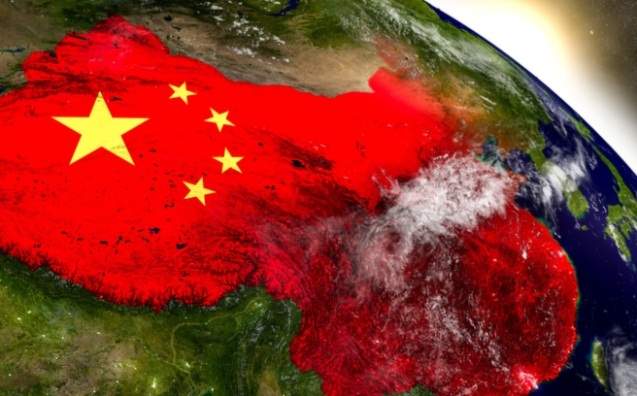China and Climate
Date :04-Jun-2021

By GWYNNE DYER :
A fully industrialised China now produces more than a quarter (26%) of the world’s CO2 emissions. If it had kept pace with its neighbours and reached full industrialisation in the 1980s, the extra emissions it would have added to the atmosphere as a result would amount to around ten years’ worth of current global emissions.
THERE is a great anomaly in China’s modern history, but it isn’t the late, unlamented one-child policy. That is endlessly discussed and debated as if it really mattered, while China’s three lost decades of economic growth and their unintended consequences for the climate crisis go almost unmentioned. There was great excitement among journalists last week when China announced its new three-child policy. Some even dared to ask why, if changing the one-child policy to a two-child policy in 2016 did nothing to fix the plunging birth-rate, does Beijing now think it can solve the problem by letting the people who already didn’t want a second kid try for three instead? The media run interviews with appealing young urban professionals (they used to be called ‘yuppies’) who explain that the pressures of life and the cost of housing make a second kid, or even a first, unthinkable. Charts show how fast the Chinese population is going to shrink.
They even hint that it’s a phenomenon peculiar to China. The only reason that the news out of China is getting this special treatment is that the regime had that punitive and futile one-child policy in the first place. Everybody (or almost everybody) knows that if you really want to lower the birth rate, educate the girls and urbanise the population as fast as possible. So a little criticism is certainly in order. The one-child policy inflicted a lot of pain, it led to the abortion of tens of millions of girl babies and a potentially destabilising surplus of boys, and it probably didn’t change China’s population trajectory much at all. In fact, the three main countries of East Asia – China, Japan and South Korea – have almost identical trajectories of past rapid population growth and future decline over the 150 years 1950-2100. Japan’s population in 1950 was 82 million. It peaked at 128 million in 2015 and on current trends will be back below 80 million by 2100. South Korea’s population was 20 million in 1960. It is peaking right now at around 52 million, and will be back down to 26 million by 2100. And China’s population was 550 million in 1950. It is peaking this year at 1.45 billion (that’s 1,450 million), and will be back down to 730 million by 2100. So no big deal. The younger generation will have to support a much bigger elderly population in all three countries, but one way or another they’ll manage.
Where they diverge radically is in when their ‘economic miracles’ got started. China was thirty years behind the other two, and that simple fact may save us from a climate disaster. There was no profound political or cultural reason why China should have lagged so far behind, but it completely missed the boat. Its per capita GDP was not significantly higher in 1980 than it had been in 1950. In the 1950s all three countries were recently shattered by war, with per capita GDPs under $100 per year. But then the ‘miracles’ kicked off in Japan and Korea, and by 1985 per capita GDP was $10,000 for Japan and $7,000 for Korea. In China in 1985, it was still only $300 per year. The Chinese economy did finally start to grow in the 1980’s, and by now it has caught up a lot. Per capita GDP is now $10,000 a year in China, compared to $33,000 a year in Korea and $40,000 in Japan. But those long decades of almost no growth in China have spared the world the immense carbon dioxide emissions that a rapidly industrialising China would have produced. A fully industrialised China now produces more than a quarter (26%) of the world’s CO2 emissions.
If it had kept pace with its neighbours and reached full industrialisation in the 1980s, the extra emissions it would have added to the atmosphere as a result would amount to around ten years’ worth of current global emissions. In that case the world would already have gone past the recommended threshold of no more than 1.5°C higher average global temperature, and would probably be condemned to cross the ‘never exceed’ +2°C limit as well. Indeed, we might already be trapped on the pathway leading to ‘Hothouse Earth’. Without noticing it, we have had a very narrow escape – and we owe our good fortune to just one man. Mao Zedong (or Mao Tse-tung, as it was written during his lifetime) single-handedly prevented the Chinese economy from taking off for a quarter-century with his ceaseless, furious political campaigns, from the ‘Great Leap Forward’ (1958-62) to the ‘Cultural Revolution’ (1966-76). Tens of millions of Chinese suffered grievously as a result, but perhaps we should put up a modest statue somewhere to The Man Who (inadvertently) Saved The World.